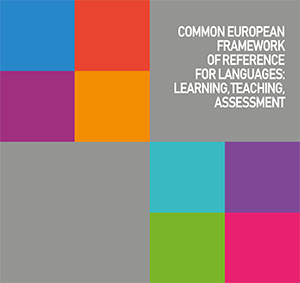The CEFR Levels
Some of the instruments produced within the Council of Europe have played a decisive role in the teaching of so-called “foreign” languages by promoting methodological innovations and new approaches to designing teaching programmes, notably the development of a communicative approach.
They have facilitated a fresh approach to communicating these teaching methods in a manner potentially more conducive to operational appropriation of unknown languages. By thus identifying language needs, they were able to pinpoint the knowledge and know-how required for attaining this communication “threshold.

The CEFR: a turning point
The first specification of this “threshold level” was formulated for the English language (Threshold level, 1975), quickly followed by French (Un Niveau Seuil, 1976). These two instruments have been used de facto as models for the same type of reference instruments that were produced subsequently for other languages, but they were adapted to suit the peculiar features of each language.
In order to meet the teaching and certification requirements, the level concept as defined was extended to cover specification of levels lying immediately below and above the threshold level. In the light of the developments in this field, particularly as regards the CEFR, other levels were developed for a number of languages. These proficiency levels constitute one of the origins of the six-level scale of the CEFR.
Launched in 2001, the CEFR marked a major turning point as it can be adapted and used for multiple contexts and applied for all languages.
The CEFR is based on all these achievements and has developed a description of the process of mastering an unknown language by type of competence and sub-competence, using descriptors for each competence or sub-competence, on which we shall not go into further detail here. These descriptors were created without reference to any specific language, which guarantees their relevance and across-the-board applicability. The descriptors specify progressive mastery of each skill, which is graded on a six-level scale (A1, A2, B1, B2, C1, C2).
However, for textbook authors, teachers and other professionals, the specification set out in the CEFR may appear excessively broad, particularly since individual languages are not addressed. The Reference Level Descriptions (RLD) for national and regional languages, which provide detailed content specifications for different CEFR levels, have been developed to address this issue.
CEFR : three tables used to introduce the Common Reference Levels
The following three tables, which are used to introduce the Common Reference Levels, are summarised from the original bank of “illustrative descriptors” developed and validated for the CEFR in the Swiss National Research project described in Appendix B of the volume. These formulations have been mathematically scaled to these levels by analysing the way in which they have been interpreted in the assessment of large numbers of learners.
- Table 1 (CEFR 3.3): Common Reference levels: Global scale
It is desirable that the common reference points are presented in different ways for different purposes. For some purposes it will however be appropriate to summarise the set of proposed Common Reference Levels in a holistic summarized table. Such a simple ‘global’ representation will make it easier to communicate the system to non-specialist users and will provide teachers and curriculum planners with orientation points. - Table 2 (CECR 3.3): Common Reference levels - Self-assessment grid
In order to orient learners, teachers and other users within the educational system for some practical purpose, a more detailed overview is necessary. Table 2 is a draft for a self-assessment orientation tool intended to help learners to profile their main language skills, and decide at which level they might look at a checklist of more detailed descriptors in order to self-assess their level of proficiency.
- Table 3 (CECR 3.3): Common Reference levels - Qualitative aspects of spoken language use
The chart in this table was designed to assess spoken performances. It focuses on different qualitative aspects of language use
The CEFR online :
CEFR - Companion volume (2020)
French version (Version française)
Arabic version (النسخة العربية)
Basque version (Euskarazko bertsioa)
Italian version (Versione italiana)
Spanish version (Versión en español)
Turkish version (Türkçe versiyonu)
International Sign Language (Translated from the Orginal version)



